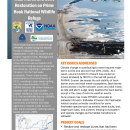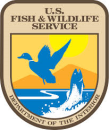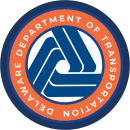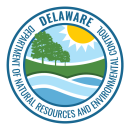Location



















States
DelawareEcosystem
Coastal, WetlandIntroduction
Prime Hook National Wildlife Refuge (PHNWR), located along the Atlantic Flyway in Delaware Bay, was established in 1963 to conserve and protect migratory birds. The refuge contains 10,144 acres of hardwood forest, upland grassland, wooded swamp, and freshwater and salt marsh salt marsh
Salt marshes are found in tidal areas near the coast, where freshwater mixes with saltwater.
Learn more about salt marsh . This diverse array of habitat is crucial for waterfowl, wading birds, passerines (Passeriformes), and the Delmarva fox squirrel (Sciurus niger cinereus). The refuge is a designated Ramsar Wetland of International Significance Site because of the site’s ecological and social value and its proximity to thriving beach communities.
PHNWR is divided into several units. The central units were established as freshwater impoundments for waterfowl and created using water control structures. Recent storms and rising sea levels have breached the impoundments, resulting in saltwater intrusion into the freshwater ecosystem. These impacts were exacerbated by Hurricane Sandy in 2012, resulting in open water spilling into the impoundments. Over the years, major coastal storms widened gaps in the dunes and worsened flooding on refuge roads in adjacent communities.
With the increase in storm frequency and sea level rise, refuge staff decided to transition the impoundments to a salt marsh system to be more resilient to climate change climate change
Climate change includes both global warming driven by human-induced emissions of greenhouse gases and the resulting large-scale shifts in weather patterns. Though there have been previous periods of climatic change, since the mid-20th century humans have had an unprecedented impact on Earth's climate system and caused change on a global scale.
Learn more about climate change . In 2012, the United States Fish and Wildlife Service (USFWS) developed a Comprehensive Conservation Plan to restore 4,000 acres of tidal marsh ecosystem utilizing nature-based solutions (NBS). Following Hurricane Sandy, the USFWS obtained 38 million dollars in disaster relief funding to bolster coastal resilience. Over six years, USFWS worked closely with the local community and the National Oceanic and Atmospheric Association (NOAA) National Marine Fisheries, US Army Corps of Engineers Philadelphia, the Delaware Coastal Program, and the state of Delaware to restore 4,000 acres of marsh, improving the health and function of the ecosystem. The integration of nature-based solutions, such as marsh and dune restoration, provides for human well-being and biodiversity benefits. The USFWS has identified nature-based solutions as a key strategy in the USFWS Climate Change Action Program to unify its climate response in accordance with the Department of the Interior’s Nature- Based Solutions Policy.
Key Issues Addressed
Climate change is contributing to more frequent storms and sea level rise (EPA, 2024). As a result, around 14,000 feet of beach has eroded (or moved landward by 500 ft) in the last 64 years at PHNWR. Erosion decreases the soil stability of back-barrier dune and tidal marsh ecosystems. Back-barrier dunes provide a buffer between ocean and tidal marsh; tide and storm surge rarely reaches the back-barrier, except in the case of extreme weather events.
Dune erosion has made PHNWR vulnerable to saltwater intrusion. Saltwater intrusion into freshwater habitat creates unlivable conditions for freshwater species such as pintails, wood ducks, teal, largemouth bass, and pickerel, leading to ecosystem and species changes as the habitat transitions to saltwater. As freshwater impoundments transition into saltwater habitats, the same waterfowl species will not be able to utilize the new habitat. Instead, different species of waterfowl, fish, and vegetation will take the place of freshwater species during the transition.
Project Goals
- Restore and reshape dunes that had been leveled by storms and sea level rise to slow and minimize erosion
- Transition freshwater habitat affected by saltwater intrusion to tidal marsh habitat
Project Highlights
Seeding to Stabilize: To stabilize the mudflat habitat, refuge staff and partners seeded 1,000 acres of exposed habitat with over 10,000 lbs of seed representing 17 different species.
- Marsh and Barrier Beach Re-Stabilization: Staff and contractors at PHNWR filled in 1.5 miles of shoreline with 1.4 million cubic yards of sand directly dredged from Delaware Bay to restore and reshape the eroded dune system. Before storms damaged the system, the beach profile included nine-foot dunes immediately followed by 100 to 600 feet of back-barrier beach before transitioning into marsh. Staff constructed sand fencing and planted plugs of brackish dune and marsh species including Panicum virgatum, Spartina patens, and Spartina alterniflora to stabilize the back-barrier and create high marsh habitat.
- Tidal Marsh Hydrologic Restoration: Tidal marsh restoration at PHNWR involved dredging 21.3 miles of channels across 4,000 acres of former freshwater impoundments. The dredged channels slowed water exchange and distributed flow throughout the marsh, lowering the water level enough to expose subaqueous soils. The dredged sediments (~600,000 cubic yards) were then disposed of by side casting them into open water.
- Hydrologic Data and Tools: The project leveraged existing ecological and hydrological data collection in partnership with the State of Delaware, amongst other informal conversations and workshops. Hydrodynamic modeling using Delft3d was also a critical tool that assessed the existing conditions of the marsh, including the circulation of tides through the system and salinity data, and the potential options for restoration.
- Community Engagement: The local community was initially resistant to the restoration because drained impoundments are unsightly and harbor odoriferous vegetation. However, once the marsh started to recover, the project co-benefits became evident and the community started to see the net positive impact. USFWS and its partners used this project as an opportunity for education and outreach with community members, restoration practitioners, resource managers, and decision makers, including public meetings, site visits, presentations, articles, and roundtables to discuss concerns.
Lessons Learned
The project design was complex and incorporated a level of detail that was commensurate with the large scale of the project. It was expected that significant modifications would be included during the construction as the varying site conditions were incorporated. This required that staff adapt the management plan throughout the process and adapt to the conditions encountered as they began restoration. If given more time in the planning and design stages, the practitioners would have allowed natural hydrologic systems to establish first and vegetation to recolonize before adding dredge material.
A multidisciplinary team was key to project success. For example, biologists on staff helped determine which species of vegetation to use, while staff physical scientists, contracted engineers, and partner engineers from the U.S. Army Corps of Engineers helped to identify the specific grain size of sand and slope of the beach habitat necessary for best restoration practices. Local expertise was critical to the success of this project. Since several employees for the project were hired on a term basis, capacity has been lost in the years following the project. Additionally, the project would not have been possible without several partner organizations. Partners assisted with pre- and post- biological monitoring and provided geomorphic expertise during tidal restoration. Because the influx of funds after Hurricane Sandy was large, the project was able to select contractors based on past experience and technical expertise, and not just lowest cost. So, contractors had the proper experience and correct equipment to make this project successful.
A core tenet of using NBS in restoration is the project’s co-benefits to human communities in addition to ecological communities. The success of this project was underscored through its tactical and deliberate community engagement, anchored by the facilitation of several in-person discussions. Community engagement is essential to the success of NBS-related projects and should begin at the onset of project design.
Next Steps
- Continue to monitor surface elevation in the marsh and on the beach, marsh birds such as the saltmarsh sparrow, beach birds including piping plovers and least terns, and vegetation response using remote sensing and field surveys.
- Develop publications about the results of the project.
- Maintain climate resilience on the refuge: storms and sea level rise will continue to test the function of the system. The refuge expects that by restoring a natural equilibrium of the system to evolve with changing conditions, the site will better maintain resilience to continue to provide co-benefits to the community. Storm surge from the Delaware Bay will be a concern in the long-term future, as the coastal communities are more prone to catastrophic impacts. But regarding the restoration itself, there are no major foreseeable issues on the horizon.
Funding Partners
- Disaster Relief Appropriations Act of 2013 (P.L. 113-2), Hurricane Resilience and Recovery Funding
- Hurricane Sandy NFWF Monitoring Grant - National Fish and Wildlife Foundation (NFWF)
Resources
- Large Scale Coastal Tidal Marsh and Barrier Beach Restoration at Prime Hook National Wildlife Refuge – Implementation and Lessons Learned
- USACE Engineering with Nature Atlas 2
- Building a Stronger Coast: Prime Hook National Wildlife Refuge
- Prime Hook Wildlife Refuge: A restoration story
- Rebirth occurring in Prime Hook refuge marshes
Contacts
- Bartholomew Wilson, Regional Geomorphologist, USFWS: bartholomew_wilson@fws.gov
- Susan Guiteras, Supervisory Wildlife Biologist, USFWS: susan_guiteras@fws.gov
CART Lead Author
Matthias Benko, CART Case Study Writer, USFWS Maintenance and Infrastructure Fellow
Suggested Citation
Benko, M. (2024). “Tidal Marsh and Dune Restoration on Prime Hook National Wildlife Refuge.” CART. Retrieved from https://www.fws.gov/project/nature-based-solutions-tidal-marsh-and-dune-restoration











